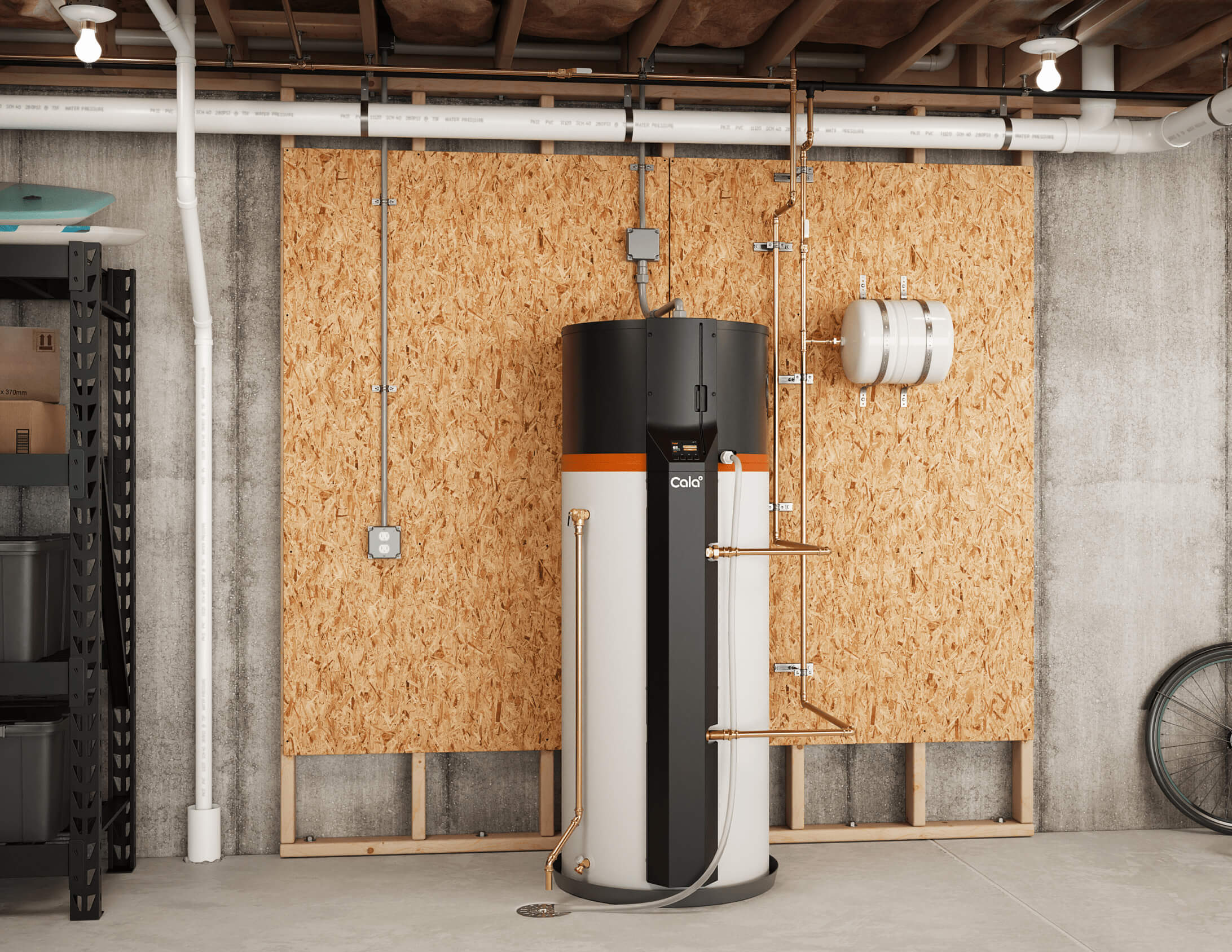Let’s talk about something you don’t usually think about—until it stops working: your water heater. Whether you’re facing the dread of a cold shower or know yours is nearing the end of its life, it’s more than just a comfort provider. Your water heater also has a big impact on your energy bills and the environment. Water heating is 19% of typical energy use in the home and a family of four can spend over $1,000 per year on water heating depending on where they live and what type of water heater they use. Home water heating has CO2 emissions of roughly 1.0 - 1.5 tons per year, the equivalent of driving a car over 3,000 miles. Across America, home water heating is 3% of total U.S. greenhouse gas emissions (GHGs).
Let’s break down how they work, why they’re essential for lowering energy costs and reducing environmental impact, and why Cala sets the standard for heat pump water heaters.
What Is a Heat Pump Water Heater (HPWH)?
A HPWH operates on a simple yet revolutionary principle: instead of using electricity to directly generate heat like a toaster, it moves heat from the surrounding air and transfers it to the water tank, like a refrigerator in reverse. This process is 2-5 times more efficient than traditional electric or natural gas water heaters, making it a standout option for homeowners who want to save money and reduce their carbon footprint without sacrificing comfort. Here’s how it works:
- A fan draws air into the system and, through a heat exchanger, transfers heat from the air into the refrigerant.
- The refrigerant goes through the compressor, which boosts its temperature and pressure. The refrigerant is now a hot gas.
- The refrigerant flows in a coil around the outside of the water tank, transferring its heat into the water. As the refrigerant cools, it condenses from a gas into a liquid.
- The refrigerant goes through an expansion valve, which reduces its temperature and pressure. The process is ready to begin again.
How Do HPWHs Differ from Traditional Water Heaters?
Traditional electric and natural gas water heater designs haven’t changed much in the last hundred years, whereas HPWHs are designed for the modern age. Here’s how they compare:
- Efficiency: As discussed above, HPWHs move heat from the air into the water, whereas traditional water heaters convert electricity or fuel directly into heat. The result is a 2-5X improvement in efficiency.
- Environmental Impact: HPWHs reduce CO2 emissions by up to 80% versus traditional electric water heaters and 50-60% versus fossil fuel water heaters. With Cala, these reductions are even greater (see below).
- Installation Costs: HPWHs are generally more expensive to buy and install than many other types of water heaters, but it depends on your circumstances. For example, replacing a tank natural gas water heater with a tankless unit may cost the same or more as switching to a heat pump water heater. Further, heat pump water heaters are eligible for local, state, and federal rebates that significantly reduce the upfront cost of installation.
- Operating Costs: HPWHs are up to 80% less expensive to operate than electric water heaters and up to 70% less expensive than oil and propane water heaters. These savings are substantial over the lifetime of the unit; for example, a family of four with the national average electricity rate of $0.17 per kWh that replaces an electric water heater with Cala will save over $6,000 in lifetime costs. For natural gas, the annual costs vary significantly on a state by state basis, so stay tuned for more insights there.
The Benefits of Cala’s Intelligent Heat Pump Water Heater
Cala Systems offers the world's first intelligent heat pump water heater, designed to optimize heating based on your family's unique schedule. First, Cala monitors your household's hot water usage to understand the patterns. It combines this knowledge with useful information, like the price of electricity, and optimizes water heating for your home. To do this, Cala uses its variable speed compressor to modulate heating speeds—running slower for efficiency during low-demand periods and faster when more hot water is needed. Finally, Cala also has an integrated mixing valve, enabling it to strategically preheat water to higher temperatures before peak usage times, during solar production, in coordination with clean electricity on the grid, or ahead of potential power outages. Overall, Cala optimizes water heating for each home, each day, based on your priorities. Here are some of Cala’s benefits:
- Maximizes Hot Water: Ensures ample hot water tailored to your household's needs.
- Saves You Money: By optimizing water heating, Cala helps lower energy bills.
- Lowers Your Carbon Footprint: Cala minimizes your home’s carbon footprint by reducing the amount of electricity required for water heating and ensuring that the electricity it uses has the lowest possible carbon footprint.
- Coordinates with your home: Cala synchronizes water heating with other major systems in your home, like solar, batteries and home automation systems. If you’d like, Cala will not produce noise or cool air during times you specify in order to ensure comfort in nearby rooms. With its unique intelligence, Cala seamlessly integrates with your home.
- Easy, Supported Installation: Suitable for most homes, with support for professional or DIY installation.
Ready to make the switch?
Reserve yours today and discover how Cala is redefining sustainable water heating.






.jpg)